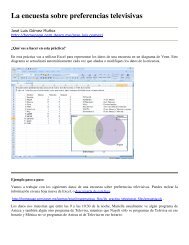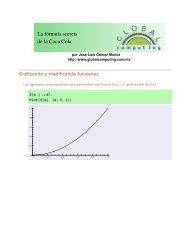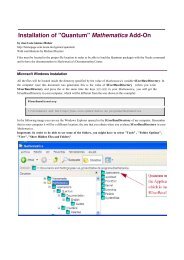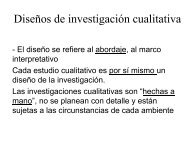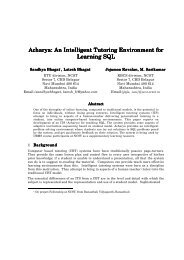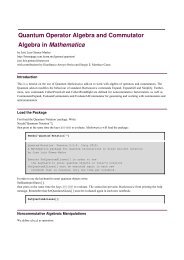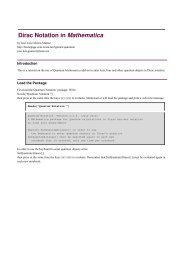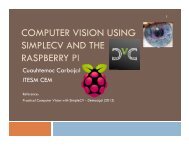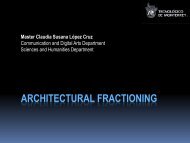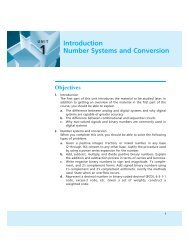Instruction Sets
Instruction Sets
Instruction Sets
You also want an ePaper? Increase the reach of your titles
YUMPU automatically turns print PDFs into web optimized ePapers that Google loves.
2.1 Preliminaries 57Harvard architectures are widely used today for one very simple reason—theseparation of program and data memories provides higher performance for digitalsignal processing. Processing signals in real-time places great strains on the dataaccess system in two ways: First, large amounts of data flow through the CPU; andsecond,that data must be processed at precise intervals,not just when the CPU getsaround to it. Data sets that arrive continuously and periodically are called streamingdata. Having two memories with separate ports provides higher memory bandwidth;notmaking data and memory compete for the same port also makes it easierto move the data at the proper times. DSPs constitute a large fraction of all microprocessorssold today,and most of them are Harvard architectures.A single exampleshows the importance of DSP: Most of the telephone calls in the world go throughat least two DSPs, one at each end of the phone call.Another axis along which we can organize computer architectures relates totheir instructions and how they are executed. Many early computer architectureswere what is known today as complex instruction set computers (CISC).These machines provided a variety of instructions that may perform very complextasks, such as string searching; they also generally used a number of differentinstruction formats of varying lengths. One of the advances in the development ofhigh-performance microprocessors was the concept of reduced instruction setcomputers (RISC).These computers tended to provide somewhat fewer and simplerinstructions.The instructions were also chosen so that they could be efficientlyexecuted in pipelined processors. Early RISC designs substantially outperformedCISC designs of the period.As it turns out,we can use RISC techniques to efficientlyexecute at least a common subset of CISC instruction sets, so the performance gapbetween RISC-like and CISC-like instruction sets has narrowed somewhat.Beyond the basic RISC/CISC characterization,we can classify computers by severalcharacteristics of their instruction sets. The instruction set of the computerdefines the interface between software modules and the underlying hardware;the instructions define what the hardware will do under certain circumstances.<strong>Instruction</strong>s can have a variety of characteristics, including:■Fixed versus variable length.■ Addressing modes.■Numbers of operands.■ Types of operations supported.The set of registers available for use by programs is called the programmingmodel,also known as the programmer model. (The CPU has many other registersthat are used for internal operations and are unavailable to programmers.)There may be several different implementations of an architecture. In fact, thearchitecture definition serves to define those characteristics that must be true ofall implementations and what may vary from implementation to implementation.Different CPUs may offer different clock speeds, different cache configurations,



